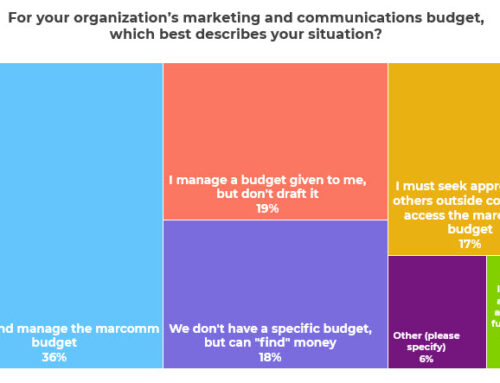I was recently asked to explain nonprofit marketing at its most basic level.
Many people in our sector answer this question by describing what I think of as communications: Creating and distributing content to people about the nonprofit and its issues.
But marketing is more strategic than that. So here’s how I explain it: Nonprofit marketing is using communications to build relationships that help you change the world.
Here’s what I mean in more detail, using a little classic marketing lingo.
Marketing is all about communicating what’s called the “value exchange.” In the business world, corporations communicate the benefits of their products, then customers exchange money for those products. Sometimes the product is something you can hold like a pair of shoes and sometimes it’s an experience, like a concert. But it always has some kind of value that has been communicated through marketing and to get that value, you exchange money for it.
In nonprofits, we also have value exchanges, but what we are exchanging with people is a bit more complicated. Nonprofits can market products and experiences, but they also market positive changes in the world and emotional benefits too.
Sometimes donors give nonprofits money — We call that fundraising. What do donors get in return? They usually get an emotional benefit like hope or a sense of accomplishment that they are fighting hunger or protecting the environment.
But nonprofit marketing is about much more than fundraising. Nonprofits also want to raise awareness and educate people about their issues. They often want to recruit program participants or volunteers. Marketing helps with all these goals and many more.
Where’s the value exchange there? Participants give their time and attention to the nonprofit. In exchange, the nonprofit usually gets one step closer to achieving their mission, whether it’s reducing domestic violence or beautifying a neighborhood. Participants and volunteers get some kind of emotional payback, such as feeling physically safer or knowing they’ve made their community a better place for their children.
Marketing is what makes all of these connections and relationships happen. You’ll use nonprofit marketing to raise money, to raise awareness, to educate people, to encourage participation, to recruit program participants and volunteers, and more. But always keep that value exchange in mind — what are people getting in return for engaging with your nonprofit? Knowing that answer will help you create communications that build those relationships over time.





